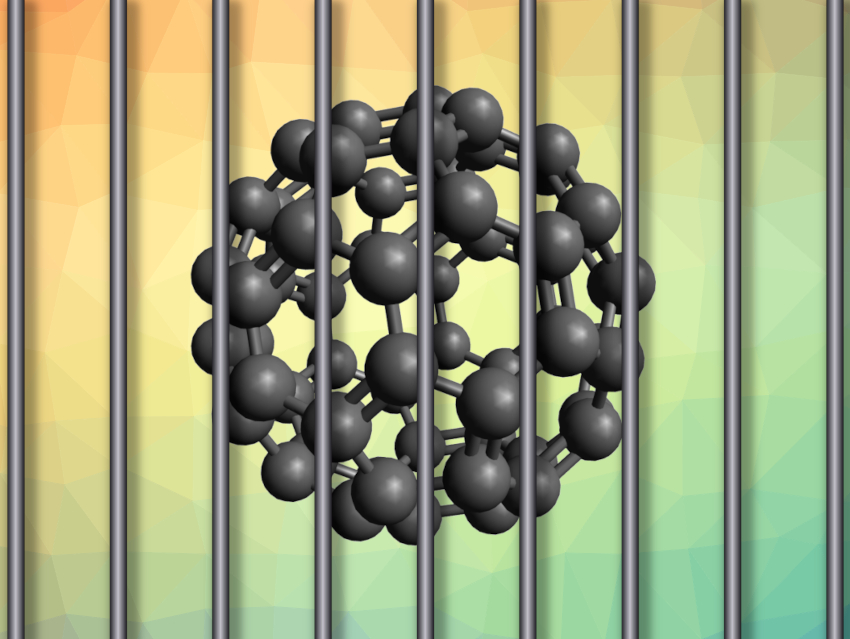Nanocages can be used to host, i.e., bind and encapsulate, other molecules. This can be useful, e.g., in sensing or separation applications. Fullerenes could be suitable guests for such host cages. This could help, for example, to solubilize the fullerenes. Nanocages with large aromatic building blocks, such as porphyrins, are useful in this context. However, the synthesis of such nanocages is generally challenging and often gives only low yields.
Mark C. Lipke and colleagues, Rutgers, The State University of New Jersey, Piscataway, USA, have developed a tetracationic, fullerene-binding nanocage that can be synthesized on a gram scale. The team started from easily accessible pyridyl- and benzylbromide-substituted porphyrin building blocks, which were slowly added to benzonitrile (PhCN) as the solvent at 200 °C over a period of six days. The resulting intermediate was then reacted with NH4PF6 in dimethylformamide (DMF) at 100 °C to give the desired tetracationic cage as a hexafluorophosphate salt in a yield of up to 57 %.
The researchers prepared host-guest complexes of the synthesized cage with the fullerenes C60 and C70 using sonication. They found that the nanocage can bind both fullerenes and solubilize them in polar solvents. Due to differences in the association constants, the cage can be used to selectively extract C70 from mixtures with C60. The team also investigated the redox properties of the fullerenes in the host-guest complexes. They found that the nanocage preserves these properties well, in contrast to other hosts, which often substantially change the redox properties of the guest.
- Gram-scale Synthesis of a Covalent Nanocage that Preserves the Redox Properties of Encapsulated Fullerenes,
Dan Rothschild, William P Kopcha, Aaron Tran, Jianyuan Zhang, Mark C Lipke,
Chem. Sci. 2022.
https://doi.org/10.1039/d2sc00445c




